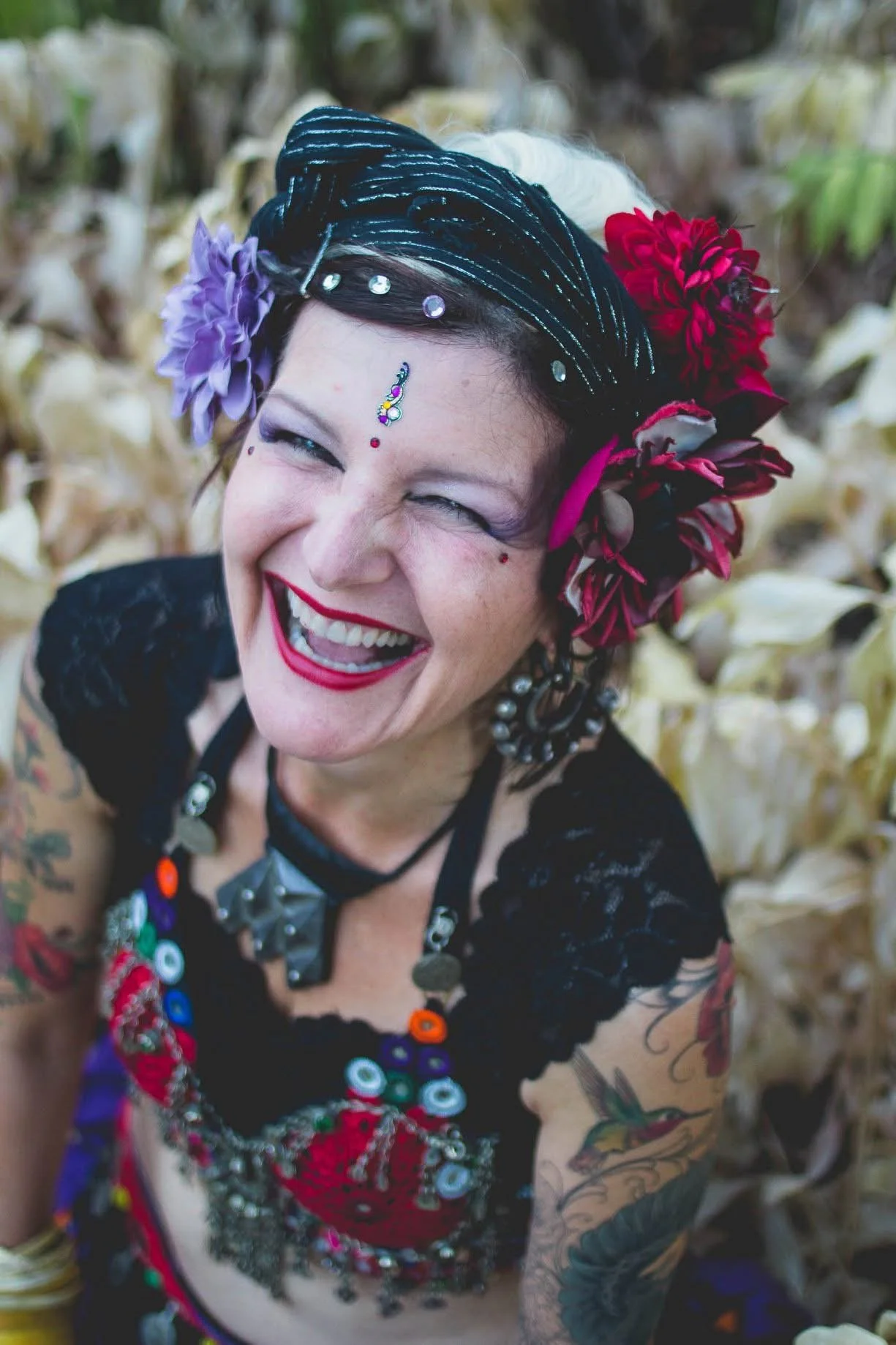What is Global Caravan Dance?
Global Caravan Dance is an earthy, feminine, modern style of group improvisational tribal bellydance innovated by Paulette Rees-Denis in 1991, Portland Oregon, USA. With a philosophy that invites one to live more mindfully and creatively, this dance format is more than movement, and has inspired women across the globe to ‘find themselves’ in dance.
What style of dance is Global Caravan Dance?
Global Caravan Dance is a fusion of ethnic dance styles drawing inspiration from the Middle East, North Africa, India, and Spain, and weaving traditional folkloric concepts with ritual and modern dance - a tapestry of old and new!
Global Caravan Dance is a group improvisational dance with a non-verbal structured format, where we move together using a shared language of cues, steps, formations, and connection. The result is a powerful blend of synchronicity, creativity, and flow. Movement becomes a meditation and we create art in the moment.
Global Caravan Dance is a mind-body-soul practice. It builds strength and grace, cultivates mindfulness, and offers a joyful way to ignite our spirits.
Colourful and exotic costuming and traditional and contemporary music complement the strong, beautifully feminine element of this dance.
Whether you’re new to dance or a seasoned mover, this is a practice that offers lifelong growth and inspiration.
More Than Dance - A Way of Life
Paulette Rees-Denis writes:
“This Global Caravan Tribal Bellydance® signature styling is an eclectic, invigorating, and elegant fusion based on urban, folk, ritual, trance, bellydance, and modern dances. With a background in classical dance training, I have created this rich blend of contemporary movement, based on our common non-verbal language and group improvisation, which is aesthetically pleasing, spiritually grounding, and physically rewarding.
While this dance evokes a feeling of ancient times, of tribal spirit and camaraderie, of family, of personal freedom, it is important for it to be recognised as a dance of today. It is a dance for all of us. The community aspect of the dance, the circle, with its exciting creative synchronicity, brings dancers together in total acceptance and support of each other, as they make magic together. When you do this dance, whether on your own or in a class, you can feel the flowing energy of the dance, from your intuitive creative core, from your womb, your energy centre, your whole being. Now that’s powerful stuff. The beauty of the dance is that it is different for everyone and every body. Dancers around the world learn the language of our dance, and with artist’s visions, adapt the style to evolve into a tribal version unique to them but with roots grounded in my traditions. Way cool!”


